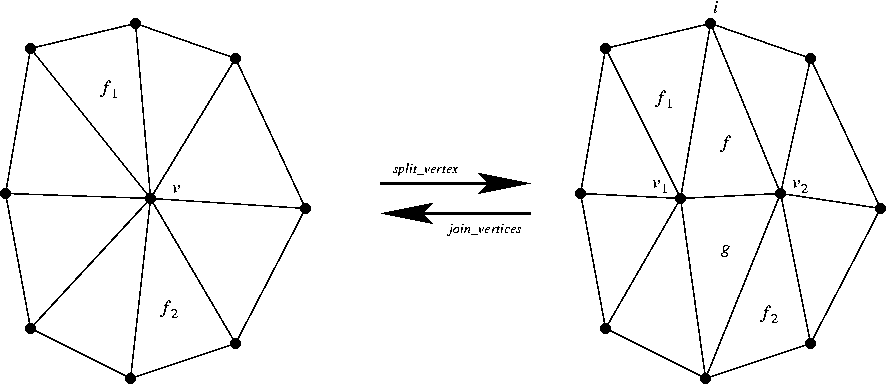
 |
The concept SegmentDelaunayGraphDataStructure_2 refines the concept ApolloniusGraphDataStructure_2. In addition it provides two methods for the merging of two vertices joined by an edge of the data structure, and the splitting of a vertex into two. The method that merges two vertices, called join_vertices identifies the two vertices and deletes their common two faces. The method that splits a vertex, called split_vertex introduces a new vertex that shares an edge and two faces with the old vertex (see figure below). Notice that the join_vertices and split_vertex operations are complementary, in the sense that one reverses the action of the other.

We only describe the additional requirements with respect to the ApolloniusGraphDataStructure_2 concept.
|
|
| |
| Joins the vertices that are endpoints of the edge (f,i). It returns a vertex handle to common vertex. | ||
|
| ||
|
| ||
| Splits the vertex v into two vertices v1 and v2. The common faces f and g of v1 and v2 are created after (in the counter-clockwise sense) the faces f1 and f2. The 4-tuple (v1,v2,f,g) is returned (see Fig. 31.7). | ||